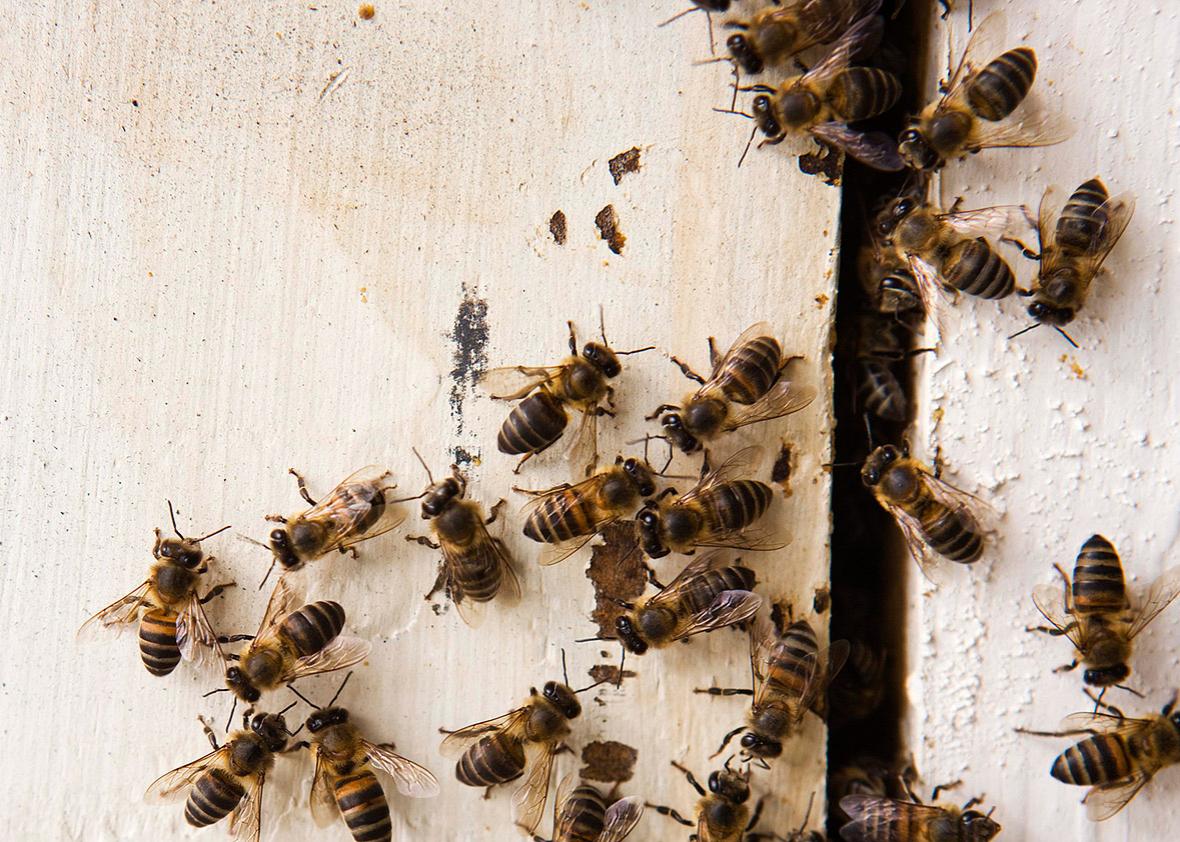This week, tens of thousands of bees were found nesting in two residential buildings two hundred miles apart. One, an abandoned building in Northern Virginia, contained a 4-foot-long hive comprised of 70,000 bees and filled with 100 pounds of honey. The other, in Brooklyn, New York, was the inhabited bedroom of Cherisse Mulzac, which turned out to also be home to 35,000 bees and a hive that had been built over several years. A quick Google search reveals a litany of other stories of bees colonizing houses this year. Noah Wilson-Rich, chief scientific officer of the Best Bees beekeeping operation, told me these kinds of invasions happen all of the time.
But why? Houses aren’t traditionally used to hold beehives. Why would bees, animals smart enough to perform counting, give detailed spatial instructions, and use tools, choose to live in a human’s den when they could live in a tall tree’s hollow? Wilson-Rich explains it as a combination of factors, but two of the most important involve the scarcity of natural nesting sites, thanks to the success of bee populations, and the general availability of suitable nesting sites in wooden homes.
It also has to do with the bees’ preferences. Hives don’t start with one or two bees and build up over time: Old hives beget new hives. When a hive gets too large, between 50 and 70 percent of the bees will form a “swarm” and leave the colony along with the old queen. As Wilson-Rich explained, “If you think about a beehive as one organism with 80,000 cells, with the queen as the ovaries and the workers as the blood, this is how a beehive has a baby.” Once the swarm has left the hive, scout bees are sent to find a new place to nest.
If a scout finds a suitable place to live, it returns to the swarm and communicates the potential nest location with a dance. If the bee is dancing vigorously, other scouts will be more likely to go inspect the nest location. Some scouts will look for bigger nesting sites to fit more bees; others will want smaller nesting sites for the energy-saving benefits. Slowly, scouts will gravitate toward one site, reflecting the preferences of the swarm, and when a quorum has been reached, the swarm will fly to the nest to begin constructing a hive.
It turns out that bees are extremely successful in cities. Because they do well in urban environments that often lack widespread green space, bees turn to the most common wood-based cavities around—in houses. And then the swarm succeeds, and grows, and creates another swarm, which is likely to nest in another city location.
There’s a problem, though. People are scared of (or allergic to) bees—or at the very least, people would prefer not to have 70,000 bees buzzing 10 feet above where they sleep. So what does one do after discovering tens of thousands of bees in one’s house? You’d be right to not want to kill them: Bees are useful. Eighty-four percent of crops grown need bees to pollinate them. (Though it’s also worth noting that contrary to the ‘bees are dying at an alarming rate’ meme, bees are actually doing all right.)
So, the right thing to do is relocate your bee colony. Wilson-Rich suggested that the best practice is to call your local beekeeping association. Most localities have one and some major cities, like New York City, have multiple. (Some pest control services will also relocate a beehive.) These beekeepers will remove the bees, most likely, by cutting out a piece of the wall, getting access to the queen, ushering her into a box, and bringing the rest of the bees in the trap. Some larger organizations, like Best Bees, have “bee vacs,” vacuums designed to suck up bees without harming them. They will then take the bees to a location that wants them, occasionally for free.
In the future, however, Wilson-Rich has much loftier goals. He doesn’t see a houseful of bees as a problem to be fixed, he sees it as an opportunity to be harnessed. He’s currently working with MIT’s Media Lab—which works in the intersection of technology, art, design, and science—on projects intended to design human architecture to reap the benefits of co-habitating with bees. With alternative architecture, people could harvest honey from their walls with the pull of a lever and use the heat generated by beehives, which reach 90 degrees Fahrenheit, to warm their water. If only people could “move past the shock and move to the benefit” of having bee colonies nearby, both species would be better off.
